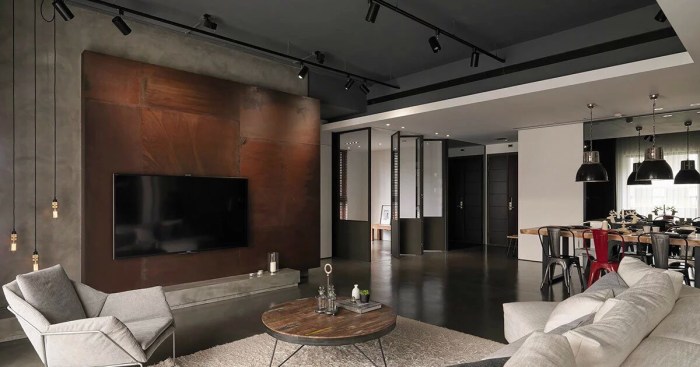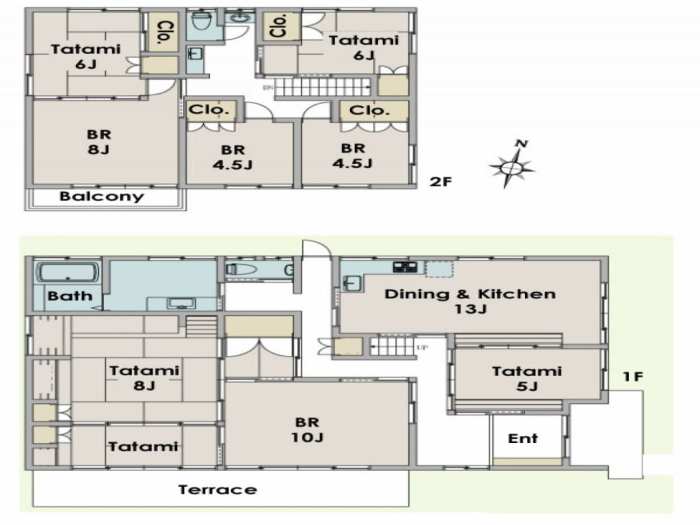Asian furniture plans offer a gateway to crafting exquisite pieces that blend history, culture, and craftsmanship. From the minimalist elegance of Japanese designs to the intricate carvings of Chinese furniture, these plans provide a blueprint for creating unique and timeless pieces for your home.
This guide delves into the diverse world of Asian furniture styles, exploring their origins, key characteristics, and construction techniques. We’ll guide you through the process of building a simple piece, like a stool or table, while highlighting the beauty and functionality that define these styles.
Introduction to Asian Furniture Styles

Asian furniture encompasses a vast and diverse range of styles, each reflecting the unique cultural heritage, artistic traditions, and practical needs of its region. From the intricate craftsmanship of ancient China to the minimalist aesthetics of Japan, Asian furniture styles offer a captivating glimpse into the history and artistry of these civilizations.
Historical and Cultural Influences
Asian furniture styles have evolved over centuries, influenced by a complex interplay of historical events, cultural beliefs, and artistic trends.
- Ancient China: The earliest forms of Chinese furniture emerged during the Han Dynasty (206 BC-220 AD), characterized by simple, functional designs using wood and lacquer. The Tang Dynasty (618-907 AD) witnessed a surge in craftsmanship, with the introduction of intricate carvings, elaborate inlays, and luxurious materials like jade and ivory. The Ming Dynasty (1368-1644 AD) is renowned for its elegant and refined furniture, characterized by simple lines, natural wood finishes, and meticulous joinery. The Qing Dynasty (1644-1912 AD) saw a revival of ornate designs and the use of exotic woods.
- Japan: Japanese furniture developed in parallel with Chinese influences but also incorporated its own unique aesthetic sensibilities. The emphasis on simplicity, functionality, and natural materials is reflected in traditional Japanese furniture, often featuring tatami mats, sliding doors, and low tables. The tea ceremony, a central element of Japanese culture, played a significant role in shaping furniture design, promoting a sense of tranquility and harmony.
- India: Indian furniture traditions are characterized by rich ornamentation, vibrant colors, and the use of a wide array of materials, including wood, ivory, metal, and textiles. Influences from various religions, including Hinduism, Buddhism, and Islam, are evident in the decorative motifs and iconography. The use of intricate carvings, inlaid designs, and vibrant colors reflects the cultural vibrancy of India.
- Southeast Asia: Southeast Asian furniture styles vary widely across the region, influenced by local traditions and the historical presence of various empires. Common elements include the use of tropical hardwoods, intricate carvings, and decorative elements inspired by nature, such as floral motifs and animal figures.
Key Characteristics of Asian Furniture Styles
Asian furniture styles are distinguished by a number of key characteristics, including:
- Materials: Asian furniture makers have traditionally used a wide range of materials, including wood, bamboo, lacquer, metal, and ivory. The choice of material often reflects the region’s natural resources and cultural preferences. For instance, Chinese furniture frequently uses hardwoods like rosewood and teak, while Japanese furniture often incorporates bamboo and pine.
- Construction Techniques: Asian furniture is known for its meticulous construction techniques, often employing traditional methods passed down through generations. Techniques like mortise and tenon joinery, dovetailing, and hand-carving are commonly used, ensuring durability and longevity.
- Decorative Elements: Asian furniture styles are often adorned with intricate carvings, inlays, and decorative motifs that reflect cultural beliefs, religious iconography, and artistic traditions. Common motifs include floral designs, geometric patterns, animal figures, and auspicious symbols.
- Functionality: Asian furniture is designed with a strong emphasis on functionality, reflecting the practical needs and lifestyle of the people. For instance, the low tables and tatami mats of traditional Japanese homes are designed for sitting on the floor, while the elaborate chests and cabinets of Chinese furniture were used for storage and display.
Popular Asian Furniture Styles

Asian furniture styles are rich in history, culture, and craftsmanship, showcasing diverse aesthetics and functional elements. From the minimalist elegance of Japanese furniture to the intricate carvings of Chinese furniture, each style reflects the unique values and traditions of its origin.
Japanese Furniture Styles, Asian furniture plans
Japanese furniture styles emphasize simplicity, functionality, and natural materials. The use of wood, particularly pine, cedar, and bamboo, is prevalent, reflecting the country’s abundant natural resources.
- Tatami: A traditional flooring material made from woven rush, tatami mats are integral to Japanese homes. They provide a comfortable and flexible seating surface and are used in conjunction with low tables and cushions.
- Chabudai: Low, round tables used for tea ceremonies and meals. Chabudai are typically made of wood and lacquered in a simple, understated manner.
- Tansu: Traditional chests used for storage. Tansu are characterized by their intricate joinery, often featuring intricate carvings and lacquerwork.
Chinese Furniture Styles
Chinese furniture styles are known for their intricate carvings, rich materials, and symbolism. The use of hardwoods, such as rosewood, mahogany, and ebony, is common, reflecting the country’s diverse forests.
- Kang: A raised platform bed used for sleeping and sitting. Kang are often heated from below, providing warmth in cold weather. Kang are frequently adorned with intricate carvings and are a symbol of comfort and hospitality.
- Guanyin bed: A type of bed named after the Buddhist goddess of mercy. Guanyin beds are often decorated with carvings of mythical creatures and floral motifs, symbolizing protection and good fortune.
- Zhan: A type of armchair with a high back and armrests. Zhan are often made of hardwood and are decorated with intricate carvings and lacquerwork. They symbolize status and authority and are frequently used in traditional Chinese homes.
Korean Furniture Styles
Korean furniture styles are influenced by both Chinese and Japanese traditions, with a focus on simplicity and practicality. The use of wood, particularly pine and oak, is prevalent, reflecting the country’s abundant forests.
- Ondol: A traditional floor heating system that utilizes a network of pipes and flues to distribute heat throughout a room. Ondol is a key feature of Korean homes, providing warmth and comfort during cold weather.
- Hanok: Traditional Korean houses are characterized by their wooden structures, tiled roofs, and papered windows. Hanok often feature simple furniture made from wood and bamboo, reflecting the importance of natural materials in Korean culture.
- Gyotong: A type of low table used for dining and tea ceremonies. Gyotong are often made of wood and are decorated with simple carvings and lacquerwork.
Southeast Asian Furniture Styles
Southeast Asian furniture styles are diverse and varied, reflecting the region’s rich cultural heritage. The use of wood, rattan, and bamboo is common, reflecting the region’s abundant natural resources.
- Thai furniture: Thai furniture styles are characterized by their intricate carvings, bright colors, and use of gold leaf. Thai furniture often features motifs inspired by Buddhist mythology and nature.
- Vietnamese furniture: Vietnamese furniture styles are known for their simplicity and functionality. Vietnamese furniture often features bamboo and rattan, reflecting the country’s abundant natural resources.
- Indonesian furniture: Indonesian furniture styles are diverse and varied, reflecting the country’s diverse cultural heritage. Indonesian furniture often features intricate carvings, bright colors, and use of wood, rattan, and bamboo.
Asian Furniture Plans


Asian furniture is renowned for its craftsmanship, durability, and intricate designs. Building your own Asian-inspired furniture can be a rewarding experience, allowing you to bring a touch of elegance and cultural heritage to your home. This section will guide you through the basic principles of Asian woodworking and joinery techniques, providing step-by-step instructions for constructing a simple piece of Asian furniture.
Asian Woodworking and Joinery Techniques
Asian woodworking techniques have evolved over centuries, resulting in sophisticated methods for creating durable and aesthetically pleasing furniture. Understanding these techniques is crucial for building authentic Asian-inspired pieces.
Basic Woodworking Techniques
- Hand Tool Techniques: Traditional Asian woodworking relies heavily on hand tools, such as chisels, planes, saws, and hammers. These tools are essential for shaping wood with precision and control.
- Mortise and Tenon Joints: This classic joinery technique is widely used in Asian furniture construction. It involves creating a rectangular hole (mortise) in one piece of wood and a corresponding protruding piece (tenon) on another. These interlocking pieces create a strong and durable joint.
- Dovetail Joints: Dovetail joints are another common joinery technique used in Asian furniture. They involve interlocking tapered pieces of wood, creating a strong and aesthetically pleasing joint. Dovetail joints are often used in drawer construction and for joining the legs and rails of tables.
Advanced Joinery Techniques
- Lap Joints: Lap joints are used to join two pieces of wood at a 90-degree angle. They are often used for joining the legs and rails of tables or chairs.
- Finger Joints: Finger joints are a strong and decorative joint used to join two pieces of wood end to end. They are often used in the construction of drawers and other box-like structures.
- Spline Joints: Spline joints are used to join two pieces of wood at a 90-degree angle. A thin strip of wood (spline) is inserted into grooves cut into both pieces, creating a strong and stable joint.
Constructing a Simple Asian Stool
This section will provide a step-by-step guide to constructing a simple Asian stool using basic woodworking techniques.
Materials
- Wood: Select a hardwood like oak, maple, or cherry for durability and strength. You can also use bamboo for a more rustic look.
- Glue: Use a high-quality wood glue for strong and lasting bonds.
- Clamps: Clamps are essential for holding pieces together while the glue dries.
- Finishing Materials: Choose a finish that complements the wood and desired aesthetic. Options include varnish, shellac, or oil.
Tools
- Hand Saw: Used for cutting the wood to size.
- Chisel: Used for creating mortises and tenons.
- Plane: Used for smoothing and shaping the wood.
- Hammer: Used for driving nails and chisels.
- Screwdriver: Used for securing screws.
- Sandpaper: Used for smoothing the wood surface.
Steps
- Cut the Wood: Cut the wood to the desired dimensions for the stool’s legs and top. The legs should be long enough to provide stability and the top should be large enough to accommodate a person’s weight.
- Create Mortises and Tenons: Use a chisel to create mortises in the legs and tenons on the top. The mortises and tenons should be a snug fit, ensuring a strong and durable joint.
- Assemble the Stool: Apply wood glue to the tenons and insert them into the mortises. Use clamps to hold the pieces together while the glue dries.
- Sand and Finish: Once the glue is dry, sand the stool smooth and apply your chosen finish. This will protect the wood and enhance its appearance.
Tips and Tricks for Working with Asian Furniture Materials
- Bamboo: Bamboo is a sustainable and lightweight material often used in Asian furniture. It is strong and durable, but can be brittle if not handled properly. When working with bamboo, it is important to use sharp tools and avoid excessive force. Bamboo can also be split or woven to create intricate designs.
- Wood: Wood is a versatile material that can be used to create a wide range of Asian furniture styles. Choose hardwoods like oak, maple, or cherry for durability and strength. When working with wood, it is important to select the right type of wood for the desired aesthetic and function.
- Rattan: Rattan is a strong and flexible vine often used in Asian furniture. It can be woven or bent to create intricate designs. When working with rattan, it is important to use sharp tools and avoid excessive force. Rattan can also be stained or painted to enhance its appearance.
Design Considerations for Asian Furniture

Asian furniture design emphasizes a balance between form and function, reflecting a deep appreciation for nature and a harmonious existence. The key design principles of proportion, balance, and harmony are woven into every aspect of Asian furniture, creating pieces that are not only aesthetically pleasing but also practical and enduring.
Incorporating Traditional Asian Motifs
Traditional Asian motifs, such as the lotus flower, bamboo, and dragon, are often incorporated into Asian furniture designs, adding a sense of history, culture, and spirituality. These motifs can be subtly integrated into modern furniture designs, adding a touch of traditional elegance without overwhelming the overall aesthetic.
- Lotus Flower: Symbolizing purity, enlightenment, and rebirth, the lotus flower motif is often used in furniture designs, adding a touch of grace and serenity. It can be incorporated in various ways, from delicate carvings to bold floral patterns, adding a touch of elegance and sophistication.
- Bamboo: Representing strength, flexibility, and resilience, bamboo is a popular motif in Asian furniture design. It can be incorporated in various ways, from intricate carvings to woven patterns, adding a touch of natural beauty and a sense of connection to nature.
- Dragon: A powerful symbol of strength, wisdom, and good fortune, the dragon motif is often used in furniture designs, adding a touch of grandeur and auspiciousness. It can be incorporated in various ways, from intricate carvings to bold patterns, adding a touch of power and prestige.
Contemporary Asian Furniture
Contemporary Asian furniture seamlessly blends traditional aesthetics with modern functionality, creating pieces that are both stylish and practical. This fusion of styles is evident in the use of modern materials, minimalist designs, and bold color palettes, while still retaining the essence of traditional Asian design principles.
- Minimalist Designs: Contemporary Asian furniture often features clean lines, simple forms, and a focus on functionality. This minimalist approach allows the natural beauty of the materials and the subtle details of the design to shine through.
- Modern Materials: Contemporary Asian furniture often incorporates modern materials, such as metal, glass, and acrylic, alongside traditional materials like wood and bamboo. This combination creates a unique blend of textures and finishes, adding depth and dimension to the design.
- Bold Color Palettes: Contemporary Asian furniture often features bold color palettes, inspired by traditional Asian art and culture. These vibrant colors add a touch of energy and excitement to the design, while still maintaining a sense of harmony and balance.
Asian Furniture Plans


You’ve got the inspiration, the design ideas, and the desire to build your own Asian-inspired furniture. Now, it’s time to find the right resources and plans to make your vision a reality. This section will explore valuable resources for Asian furniture plans, showcasing inspiring designs and emphasizing the importance of cultural understanding.
Reputable Online Resources and Books
Reliable online resources and well-researched books are essential for finding detailed Asian furniture plans. These resources offer a wealth of information, from historical context to step-by-step instructions.
- Online Resources: Several websites provide free or paid Asian furniture plans, along with valuable information on different styles, materials, and construction techniques.
- Books: Numerous books delve into the history, styles, and construction of Asian furniture. These books offer detailed plans, illustrations, and insights into the cultural significance of these pieces.
Here are some examples of reputable online resources and books that offer detailed plans and insights for building Asian furniture:
- Websites:
- Woodworking for Mere Mortals: This website features a wide range of free woodworking plans, including Asian-inspired designs, such as a Japanese tea table or a Chinese cabinet. They provide detailed instructions and diagrams to guide you through the construction process.
- Ana White: Ana White’s website offers a variety of free woodworking plans, including some with Asian influences. Her plans are known for their clarity and detailed instructions.
- The Wood Whisperer: This website offers a mix of free and paid woodworking plans, including several Asian-inspired designs. The Wood Whisperer’s plans are known for their high quality and attention to detail.
- Books:
- “The Complete Book of Asian Furniture” by John Makepeace: This book explores the history, styles, and construction techniques of Asian furniture from various regions, including Japan, China, and Southeast Asia. It provides detailed plans and insights into the cultural context of these pieces.
- “The Japanese Woodworker” by Toshio Odate: This book focuses on traditional Japanese woodworking techniques and features detailed plans for building various furniture pieces, from tea tables to cabinets.
- “The Chinese Cabinetmaker” by Huang Yongyu: This book provides an in-depth look at the history and techniques of Chinese furniture making, featuring detailed plans and illustrations of various styles.
Inspiring Examples of Asian Furniture Designs
Exploring the diverse world of Asian furniture can ignite your creativity and inspire your own designs. From the minimalist elegance of Japanese furniture to the intricate carvings of Chinese pieces, Asian furniture offers a rich tapestry of styles and aesthetics.
Here are some examples of inspiring Asian furniture designs from different eras and regions:
- Japanese Furniture:
- Tansu: A traditional Japanese chest of drawers, often featuring intricate joinery and delicate carvings. The tansu is a testament to the precision and artistry of Japanese woodworking.
- Chabudai: A low table used for tea ceremonies, typically featuring a simple, functional design and a minimalist aesthetic.
- Shoji Screens: These translucent screens, made from paper stretched over a wooden frame, are used to divide spaces and create a sense of privacy. Shoji screens are a quintessential element of traditional Japanese architecture and design.
- Chinese Furniture:
- Kang: A raised platform bed used for sleeping and socializing, often featuring intricate carvings and colorful finishes. The kang is a symbol of comfort and hospitality in Chinese culture.
- Zitan Cabinet: These cabinets, made from precious rosewood, are renowned for their exquisite craftsmanship and intricate carvings. Zitan cabinets were prized possessions in ancient China and are now highly sought after by collectors.
- Ming Dynasty Furniture: This era, known for its simplicity and elegance, produced furniture characterized by clean lines, subtle carvings, and the use of natural materials. Ming Dynasty furniture is considered a pinnacle of Chinese furniture design.
- Southeast Asian Furniture:
- Thai Furniture: Often featuring intricate carvings, bold colors, and a blend of traditional and modern elements. Thai furniture is known for its vibrant aesthetic and use of natural materials.
- Vietnamese Furniture: Typically made from wood, bamboo, or rattan, Vietnamese furniture is known for its durability, practicality, and unique designs. It often incorporates traditional motifs and symbols.
- Indonesian Furniture: Indonesian furniture is characterized by its use of intricate carvings, rich colors, and natural materials. It often features motifs from Hindu and Buddhist mythology.
Understanding the Cultural Context of Asian Furniture
Before embarking on building your own Asian furniture, it’s crucial to understand the cultural context of the style you’re interested in. Each region and era has its own unique traditions, techniques, and symbolism that contribute to the meaning and significance of the furniture.
Understanding the cultural context of Asian furniture is important for several reasons:
- Respect for Tradition: Building Asian furniture is not simply about replicating a design. It’s about understanding the cultural significance and honoring the traditions that have shaped these pieces over centuries.
- Authenticity: Understanding the cultural context helps you create pieces that are authentic to the style you’re emulating. This involves using appropriate materials, construction techniques, and design elements.
- Appreciation: By learning about the cultural context of Asian furniture, you gain a deeper appreciation for the craftsmanship, artistry, and symbolism that have gone into creating these pieces.
Here are some ways to research and understand the cultural context of Asian furniture:
- Books and Articles: Explore books and articles on the history, styles, and cultural significance of Asian furniture from different regions and eras.
- Museums and Galleries: Visit museums and galleries that showcase Asian furniture collections. This provides a firsthand experience of the diversity and artistry of these pieces.
- Online Resources: Utilize online resources, such as websites, blogs, and forums, to learn about the cultural context of Asian furniture. Many online communities are dedicated to discussing and sharing knowledge about Asian furniture.
Final Review

With the right plans and a touch of dedication, you can bring the artistry of Asian furniture into your own home. Whether you’re a seasoned woodworker or a curious beginner, these plans provide a roadmap to creating pieces that reflect the rich history and enduring beauty of Asian design traditions.
Helpful Answers: Asian Furniture Plans
What are some common materials used in Asian furniture?
Bamboo, wood (like teak, oak, and rosewood), rattan, and lacquered finishes are frequently employed in Asian furniture construction.
Are there any specific tools needed for building Asian furniture?
While basic woodworking tools are essential, you might also need specialized tools like chisels for intricate joinery, hand planes for smoothing surfaces, and a variety of saws for different cuts.
Where can I find inspiration for Asian furniture designs?
Museums, art galleries, online resources, and books dedicated to Asian furniture design are excellent sources of inspiration. You can also browse online marketplaces and antique shops to see real-world examples.
Asian furniture plans can be a great place to start your woodworking journey. They often feature simple, elegant designs that are perfect for beginners. If you’re looking for inspiration, check out this article on first woodworking projects. Once you’ve got the basics down, you can tackle more complex Asian furniture designs, like a traditional Japanese tea table or a beautiful Chinese cabinet.
